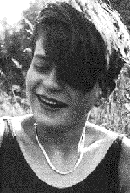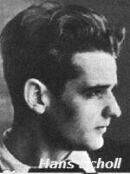
home introduction task resources acquire information use of information presentation evaluation assessment teacher
The White Rose
Teacher Page
The SixPack
The format for this task on The White Rose is the SixPack. The Sixpack ia a format for inquiry-oriented activities to develop research and information literacy skills. It is therefore a combination of the webquest (an inquiry-oriented activity in which some or all of the information that students interact with comes from resources on the internet) and the Big6 (a process model of how people of all ages solve an information problem.
The six steps in a SixPack:
1. Task
In some SixPacks students will investigate a given main
question and (leading) sub-questions, in other SixPacs
students will have to think of their owm main question
and subquestions.
2. Resources
In some Sixpacks the resources will be given to the
students in other SixPacks the students have to find
their own resources and evaluate these resources on
usability and relialbility.
3. Acquire information
Students acquire and select form the resources the
information they need.
4. Use information
Stduenst use the selected information to answer
subquestions and main question.
5. Presentation
Students present the results of the investigation in a
way that suits the task or the target group.
6. Evaluation
Students evaluate the process and the results of thei
investigation acoording to a given format or with their
own format
In the introduction to the SixPack students are told how this task is related to the history curriculum. In assessment students can read how this task will be assessed and teacher is for necessary or interesting additional information and tips for teachers who like to use the SixPack.
In this SixPack the students write an essay about the German youth and Hitler: enthusiasm, doubt and resistance. To collect and select the material they need to write this essay they will make four tasks:
1. In the first three tasks students answer questions to extracts of the book 'The White Rose' and the least leaflet of the resistance group.
2. To get a deeper understanding of the subject students answer in the fourth task questions using different resources.
Students will work in small groups (3 students) to further discussion and understanding.
You can download the resources as a Word-file
here.
Attainment targets
-
Students research, using the example of the White Rose, why people in Germany were initially so enthusiastic about the Nazis
-
Students understand why the opinion of the Scholls changed over time and why they joined the resistance.
Students can discuss participation in the resistance. -
Students apply the following second order concepts:
-
they realise that judgements by persons in the past and persons in the present, including their own, are products of their time and place. (realizing the possibility that people in other times or events in their behavior and making judgments may be guided by other beliefs, values and interests)
-
they distinguish between fact and opinion
-
they distinguish different kinds of causes and effects
-
describe continuity and change within historical developments
-
they acquire evidence suitable to answer a question and select data from this evidence.
-
The White Rose (German: die Weiße Rose) was a non-
violent / intellectual resistance group in Nazi Germany,
consisting of students from the University of Munich and
their philosophy professor. The group became known for
an anonymous leaflet campaign, lasting from June 1942
until February 1943, that called for active opposition
to dictator Adolf Hitler's regime.
The six core members of the group were arrested by the
Gestapo (German secret police) and they were executed by
decapitation in 1943. The text of their sixth leaflet
was smuggled by Helmuth James Graf von Moltke out of
Germany through Scandinavia to the United Kingdom, and
in July 1943 copies of it were dropped over Germany by
Allied planes, retitled "The Manifesto of the Students
of Munich."
Five students from Munich University and one of their
professors made a promise to Stand up to Hatred by
challenging the Nazi regime. They formed the White Rose
group and began a secret campaign. They challenged the
German people to react to the violence and oppression
which were all around them by standing up and fighting
for freedom. In June 1942 four leaflets, published in
quick succession, with the title ‘Leaflets of the White
Rose’ appeared all over the city of Munich. They were
anti Nazi messages which had been typed on both sides of
a piece of paper and duplicated on a hand cranked
machine. They were delivered through the post to people
all over the city. The Nazi authorities had no idea who
had written these messages nor who had posted them. At
the end of the first three leaflets was a message to the
reader. “Please make copies of this leaflet and pass
them on.” At the end of the fourth was a statement. “We
will not be silent. We are your bad conscience. The
White Rose will not leave you in peace!”
In January 1943 a second series ‘Leaflets of the
Resistance’ appeared. These were printed in secret, at
night, and thousands of copies were made. The leaflets
declared that Hitler was a liar and drew attention to
the suffering of the Jews. The Nazis knew that they had
to stop people reading these messages. They did not want
anyone to hear the truth about their activities. The
Gestapo was instructed to seek out the writers, printers
and distributors of the leaflets and put an end to their
campaign.
The students worked hard to get their message to as many
people as possible. They stuffed hundreds of leaflets
into rucksacks, bags and cases. Each student caught a
train out of Munich to post them in another town. Bags
of leaflets were left in one part of the train and the
student sat in another carriage. The students secretly
posted the leaflets in the quietest parts of each town.
The White Rose group had other ways to pass their
message to the German people. In February 1943 they
crept out at night and painted statements about freedom
and the words “Down with Hitler” on city walls for
everyone to see the following morning.
On February 18th a brother and sister walked together
towards Munich University. They were Hans and Sophie
Scholl, members of the White Rose. Hans was carrying a
large suitcase. They entered the building whilst most of
the students were attending lectures. They took a large
number of leaflets from the suitcase and put them in
prominent positions. They climbed to the top floor and
threw the remaining leaflets into the hall. Their task
over, the suitcase was empty and they were ready to go
home. However, just as the doors of the lecture theatre
opened and large groups of students began to leave their
lectures, a voice echoed around the building. “You are
under arrest!” Hans and Sophie had been spotted by Jakob
Schmid, a building caretaker. He was a loyal member of
the Nazi party and this was his chance to prove it.
Hans and Sophie had no chance to escape. Hans had a
draft copy of the next White Rose leaflet in his pocket.
The Gestapo was called. By February 22nd they had been
interrogated, imprisoned, put on trial and beheaded for
treason. Other arrests, trials and executions followed.
The Nazis wanted to make an example of anyone who had
helped the students in order to discourage others from
taking part in resistance activities.
However they were too late to contain the message of the
White Rose. By April 1943 news of the students’ fate and
their call for the German people to Stand up to Hatred
had reached the New York Times and it was reported that
on the walls of the city of Munich new messages had
appeared. They read “Scholl lives! You can break the
body but not the spirit”.
Source:
http://www.hmd.org.uk/resources/education/case-study-the-white-rose
Movies
-
Die Weisse Rose (The White Rose) , 1982
-
Rosenstrasse, 2003
-
Napola (Before the Fall), 2004
Websites on the White Rose
The White Rose

Sophie Scholl

Hans Scholl

Copyright: Albert van der Kaap, 2010